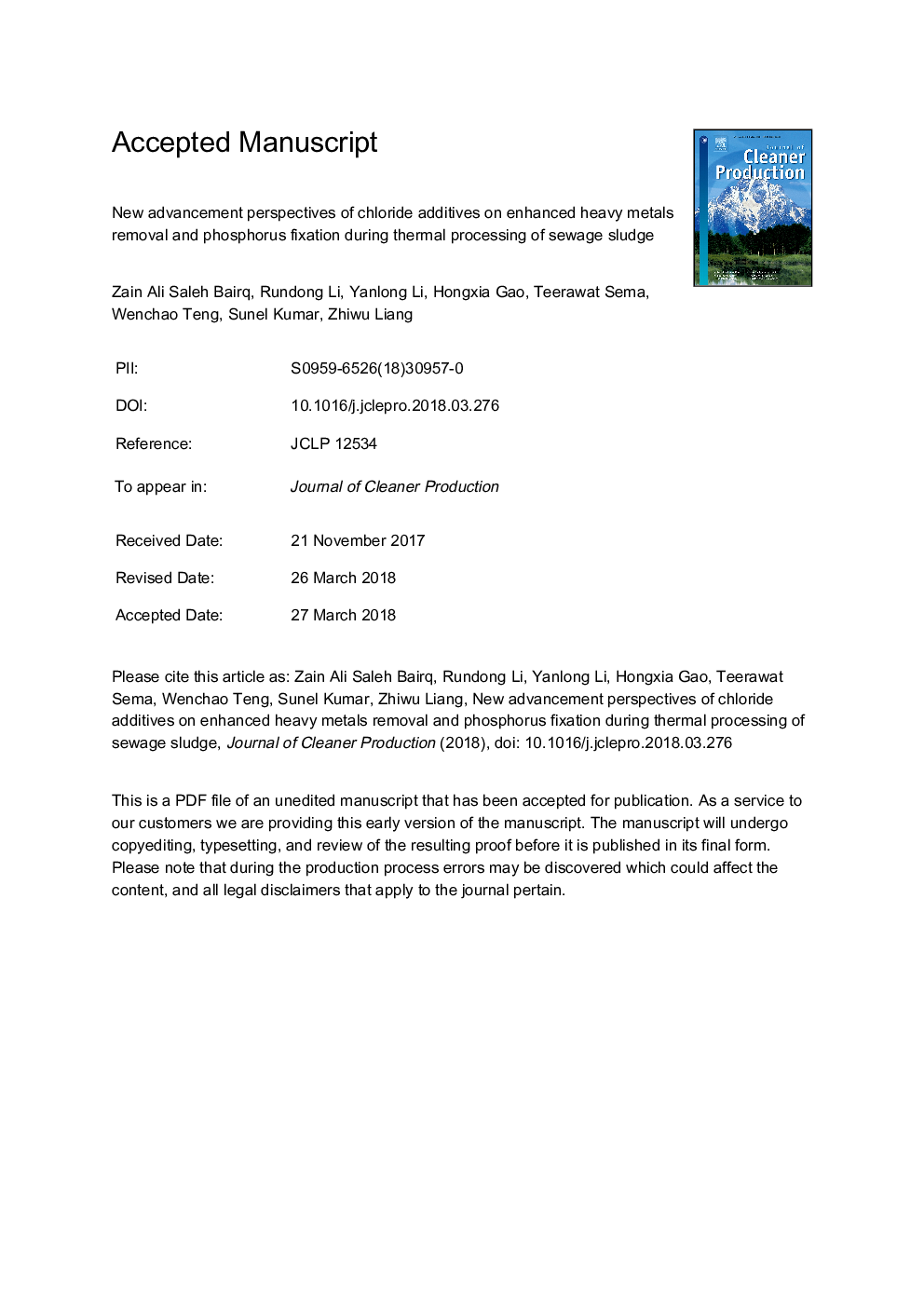| کد مقاله | کد نشریه | سال انتشار | مقاله انگلیسی | نسخه تمام متن |
|---|---|---|---|---|
| 8095420 | 1522065 | 2018 | 42 صفحه PDF | دانلود رایگان |
عنوان انگلیسی مقاله ISI
New advancement perspectives of chloride additives on enhanced heavy metals removal and phosphorus fixation during thermal processing of sewage sludge
ترجمه فارسی عنوان
دیدگاه های پیشرفته جدید از افزودنی های کلرید در افزایش فلزات سنگین و اصلاح فسفر در طول عملیات حرارتی لجن فاضلاب
دانلود مقاله + سفارش ترجمه
دانلود مقاله ISI انگلیسی
رایگان برای ایرانیان
کلمات کلیدی
لجن فاضلاب، فلزات سنگین، فسفر، درمان های حرارتی، راندمان حذف،
موضوعات مرتبط
مهندسی و علوم پایه
مهندسی انرژی
انرژی های تجدید پذیر، توسعه پایدار و محیط زیست
چکیده انگلیسی
Controlling the removal of heavy metals such as Copper (Cu), Zinc (Zn), lead (Pb) and cadmium (Cd) during the sewage sludge incineration and the recovery of phosphorus (P) from sewage sludge ash (SSA) remain challenging. Herein we aim to investigate the effect of the temperature, retention time and chlorinating agent additives (MgCl2 and KCl) on both the behavior of selected heavy metals and the ï¬xed rate of phosphorus (P) during sewage sludge incineration. Dry sewage sludge was mixed with various amounts of chlorinating agent and treated by a laboratory scale furnace in the temperature range of 800-1000â¯Â°C for different retention times (30, 60 and 120â¯min). The results demonstrated that the removal efficiency of heavy metals exhibited an increasing tendency with the addition of chloride, especially in the cases of Cu, Zn and Pb. Moreover, the temperature and retention time demonstrated significant effects on the promotion of heavy metals removal. In the case of Pb 96% was removed at 800â¯Â°C within 120â¯min, while 86.6% of Cd was effectively removed at 1000â¯Â°C within 30â¯min. MgCl2 proved to be more effective than KCl in improving the removal efficiency of heavy metals, such that up to 81.6% of Cu, 84.9% of Pb and 73.5% of Zn was removed with the addition of 15%wt Clâ/sewage sludge (SS(, At 960â¯Â°C, the boiling point of cadmium chloride CdCl2 and CdO.Al2O3.2SiO2 retention time and chlorinating agent had no impact on Cd removal. It was also observed that high temperature was beneficial for the transformation of non-apatite inorganic phosphorus (NAIP) to apatite phosphorus (AP). At 900â¯Â°C this transformation is efficient for Phosphate fixation, which is evidence that apatite phosphorus (AP) has the ability to be more stable than non-apatite inorganic phosphorus (NAIP) at high temperature.
ناشر
Database: Elsevier - ScienceDirect (ساینس دایرکت)
Journal: Journal of Cleaner Production - Volume 188, 1 July 2018, Pages 185-194
Journal: Journal of Cleaner Production - Volume 188, 1 July 2018, Pages 185-194
نویسندگان
Zain Ali Saleh Bairq, Rundong Li, Yanlong Li, Hongxia Gao, Teerawat Sema, Wenchao Teng, Sunel Kumar, Zhiwu Liang,
